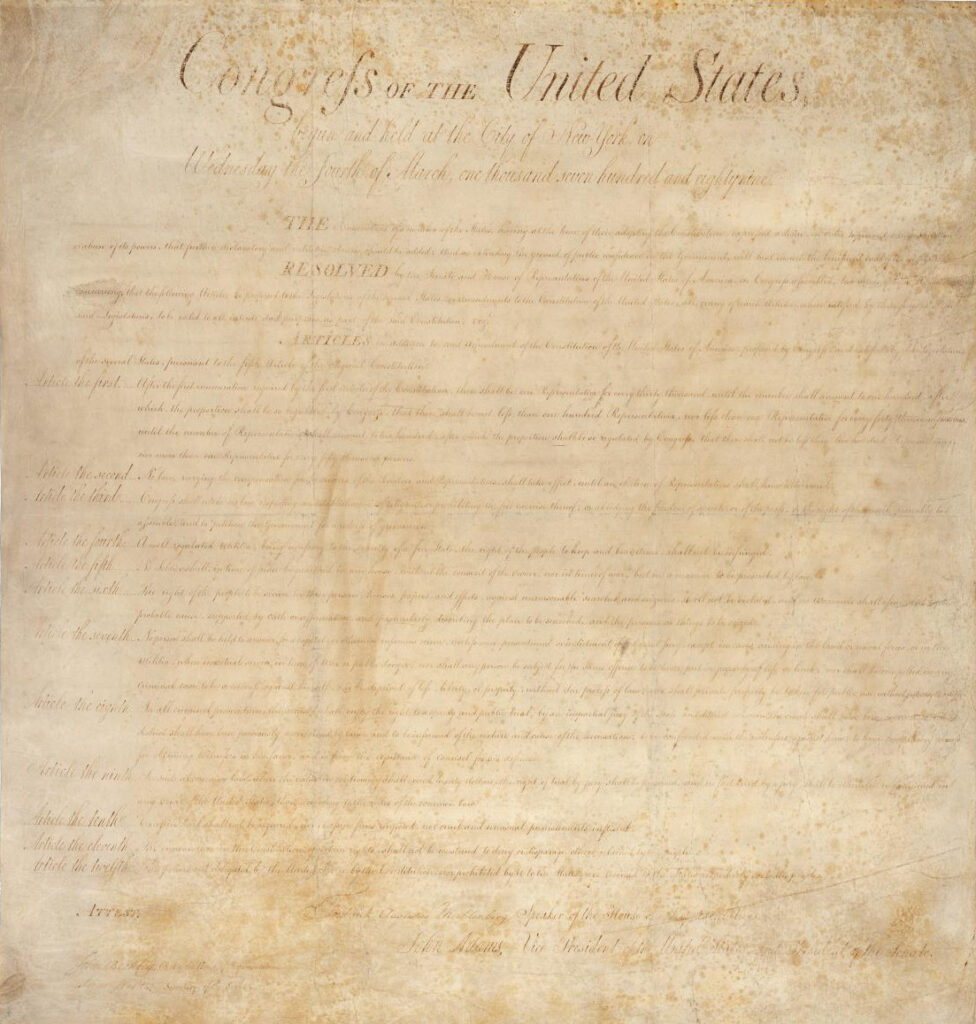Bill of Rights
During the debates on the adoption of the Constitution, its opponents repeatedly charged that the document would open the way to tyranny by the strong central government. They demanded a “bill of rights” that would specify the rights of individual citizens.
In September 1789, the First Congress of the United States proposed 12 amendments to the Constitution, addressing the most frequent criticisms. Articles 3 through 12, which three-fourths of the states ratified on December 15, 1791, constitute the first 10 amendments to the Constitution and are known as the Bill of Rights. The original second article, concerning the compensation of members of Congress, finally became law on May 7, 1992. Congress never passed the original first amendment, which concerned the number of constituents for each representative.
The Bill of Rights defines citizens’ rights in relation to the government, including guarantees many Americans now understand as central to their way of life: the four freedoms of speech, religion, the press, and political activity. The Bill of Rights also encompasses principles fundamental to the American legal system: the rights to due process of law, trial by jury, and protection from cruel and unusual punishment and self-incrimination.
The Bill of Rights, along with the Declaration of Independence and the US Constitution, is on display in the Rotunda for the Charters of Freedom in the National Archives Museum in Washington, DC.

Click here to read all 27 ratified amendments to the Constitution.




